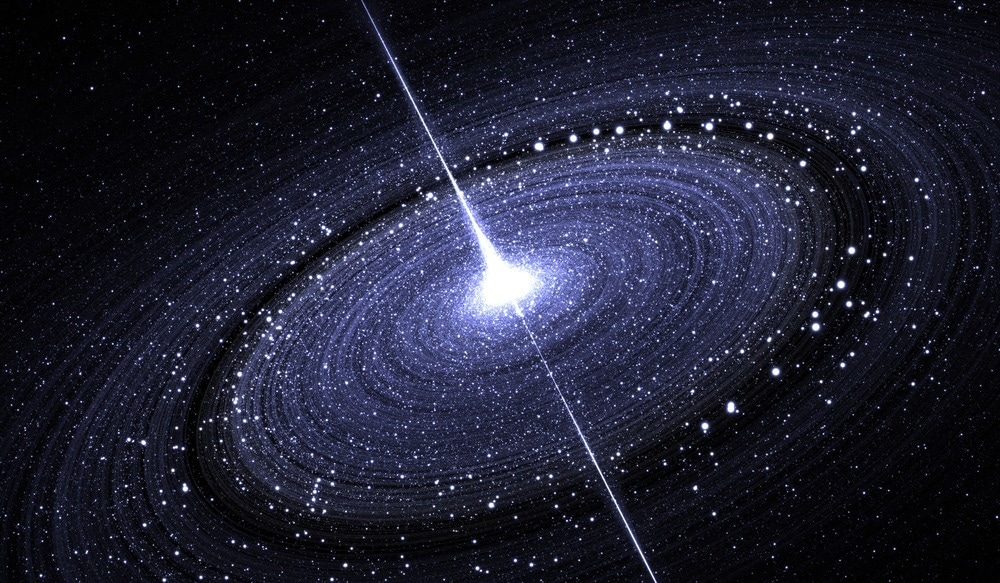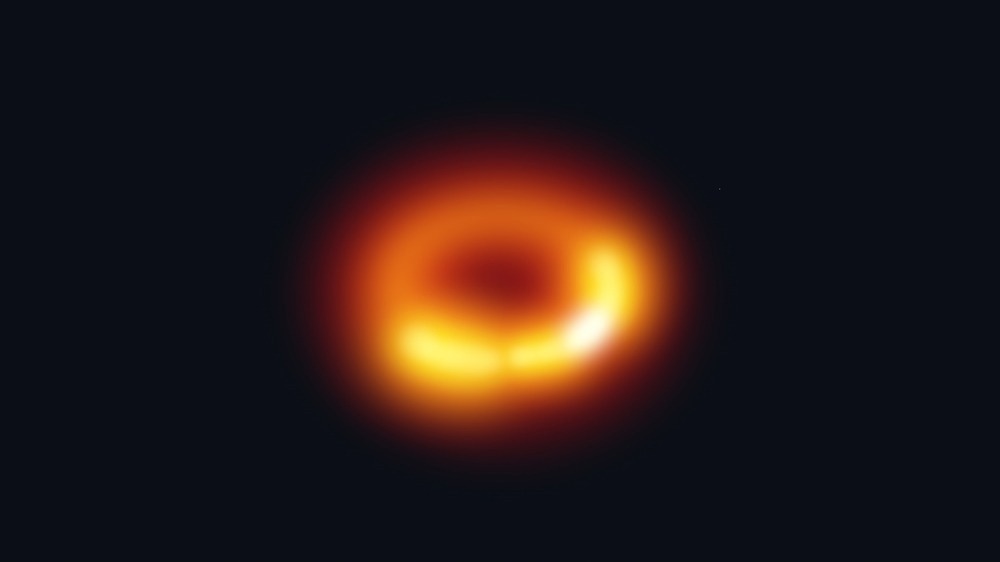New research connects two key elements of galactic evolution, the growth of supermassive black holes and the birth of new stars.

Image Credit: Jurik Peter/Shutterstock.com
Sitting at the center of most large galaxies are supermassive black holes with masses equivalent to millions or even billions of times that of the sun. Astrophysicists recognize that these monsters cannot form in the same way as smaller, stellar-mass black holes as no single star could ever be large enough to collapse and create such a massive black hole.
The leading theory of how supermassive black holes form suggests this happens when smaller black holes collide and merge. Another step on this hierarchical chain of black hole growth could happen when galaxies collide and merge.
This process obviously also leads to the growth and evolution of galaxies, but it is also believed to trigger in the resultant merged galaxy a period of intense star birth.
However, this is not the only way in which the growth and evolution of supermassive black holes and star formation are intrinsically linked.
These cosmic monsters often consume copious amounts of matter. This results in them blasting out material at near-light speeds as well as creating outflows of energy that can outshine the combined output of every star in the galaxy around them as part of what researchers call Active Galactic Nuclei (AGN). These AGN are often cited as the ‘engines’ that power galaxies, and for good reason.
Matter in the regions around these cosmic titans is endlessly churned, creating violent and hot conditions that cause this gas and dust to glow in X-rays — highly energetic light. Gas close to the boundary of the black hole called the event horizon glows brightly as the tremendous gravitational influence of the supermassive black hole whips it around at almost the speed of light.
With supermassive black holes driving such intense and violent conditions it should come as little surprise that they play major roles in the evolution of the galaxies that surround them.
Yet, while this has been certain for some time, researchers have not quite been sure what shape this influence takes. In particular, astrophysicists have been keen to learn how central supermassive black holes influence star birth in their galaxies.
We know for a fact that some galaxies form stars much more rapidly than others. But what is causing galaxies like the Milky Way to become ‘quiet’ isn’t quite known. One suggestion is that energy from supermassive black holes drives star-forming gas and dust from galaxies. An alternative is that this energy heats up gas, and because it is cool gas and dust that collapses to form stars, ends star birth this way.
Thus, the growth of supermassive black holes could be a major factor in regulating star formation, but the connection is ‘fuzzy’ at best.
Now, a University of Massachusetts Amherst undergraduate student, Meredith Stone, may have delivered key insights into how these factors of galactic evolution are linked.
Stone’s research, which was overseen by professor of astronomy at the University of Massachusetts Amherst, Alexandra Pope, is published in the latest edition of The Astrophysical Journal.
Seeing Through Star Forming Material
Thus far it has been difficult for astronomers to observe how the growth of black holes and star formation could be linked and give rise to a regulating effect. This is partially because the interaction between black holes and stars in galaxies is difficult to observe due to the fact that they are often shrouded in dust and gas.
This is especially true in galaxies actively forming stars because these clouds of matter are the building blocks from which stars form, meaning galaxies and regions of active star birth possess copious amounts of dense and cool gas and dust. This can cause the absorption of as much as 90 percent of visible light from these regions.
However, there is a way around this difficulty.

Supermassive black hole in the center of the galaxy Messier 87. Image Credit: NovAtlantis/Shutterstock.com
When dust and gas absorb visible light they heat up and emit infrared light. Although infrared light is invisible to the naked eye, there are telescopes that can ‘see’ this form of electromagnetic radiation.
Stone and her team used data from just such an instrument, NASA’s Spitzer Space Telescope, collected during the Great Observatories All-sky LIRG Survey (GOALS) campaign. Spitzer was launched in 2003 with the mission of viewing the Universe in infrared and thus revealing things that cannot be seen in visible light. In this case, it looked at some of the brightest galaxies that are relatively close to Earth.
In this data, Stone and her colleagues looked for the tell-tale signs that point toward black holes and star birth. These cosmic fingerprints are incredibly faint and difficult to pick out from the background noise of the infrared spectrum.
The team solved this issue by calibrating their search to gain more distinct measurements. With this done the researchers could see that the growth of black holes and star formation are both happening in galaxies at the same time and in the same place.
Stone and the team also concluded that the two processes are influencing one another, defining a ratio that describes the link between the two phenomena. What this research doesn’t answer is why these phenomena are intertwined.
However, the new findings could potentially act as a roadmap for observations to be made with the most powerful infrared telescope that humanity has ever placed into space — the James Webb Space Telescope (JWST).
The researchers suggest that the JWST could zoom in closer on star-forming regions, seeing through the dense gas and dust to observe star formation as it happens. This could help link this process with the growth of black holes on the way to supermassive status.
More from AZoQuantum: Why Einstein’s General Relativity Theory Is Still Right After 100 Years
References and Further Reading
Stone. M., Pope. A., McKinney. J., et al, [2022], ‘Measuring Star Formation and Black Hole Accretion Rates in Tandem Using Mid-infrared Spectra of Local Infrared Luminous Galaxies,’ The Astrophysical Journal, https://iopscience.iop.org/article/10.3847/1538-4357/ac778b
Mission Overview, Spitzer Space Telescope, NASA, https://www.nasa.gov/mission_pages/spitzer/main/index.html
Disclaimer: The views expressed here are those of the author expressed in their private capacity and do not necessarily represent the views of AZoM.com Limited T/A AZoNetwork the owner and operator of this website. This disclaimer forms part of the Terms and conditions of use of this website.